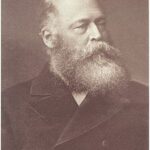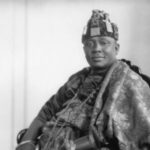KAYAMBA
- 5 Min Read
Kaiyamba (who flourished in the mid-19th century), was a powerful Mende warrior and the founder of Moyamba, 96 km (60 mi) east-southeast of Freetown, which grew to prosperity and prominence in the late 19th and 20th centuries, becoming an important part of the Kpaa-Mende state.
Born on the eastern extremities of Kpaa-Mende country at a place called Yandu, Kaiyamba made his reputation in warfare but in time became tired of fighting and embarked on travels towards the coast to found a settlement. During his period of initiation into the Poro, a male secret society among the Mende, he was called Mangowai, but during his travel he was known as Kagbana. Later, however, he came to be called Kaiyamba, the name by which he is remembered in oral history. His retinue, when he left his birthplace, consisted of his wife Tangolawai, his chief warrior Gombla and numerous relatives, warriors and dependents. Some of his followers remained at Yandu intending to join the first contingent once a suitable settlement had been founded.
During his travels, Kaiyamba heard of a famous soothsayer, Solonto of Gbangbama, who is said to have possessed owls who sang his praises every day and whose magical potions were prepared with water from a well believed to be fatally poisonous to the non-initiated. In order to get to Gbangbama, in Moyamba district in the Southern Province, Kaiyamba had to find a way of crossing the Taia River (also known as the Jong) which is wide; but while he was still trying to solve this problem, he heard of another powerful magician, Sei Molay, who lived at Hemabu in Banta-Mokelle country.
He succeeded in meeting Sei Molay, with whom he became close friends and whose daughter, Konya Nallo, he married. Thereafter, Sei Molay led Kaiyamba to meet the famous Solonto at Gbangbama. After looking ground,” or consulting occult powers, Solonto prophesied that Kaiyamba and his children after him would become great rulers and that he should look for a place between two hills having a river with many tributaries to establish a settlement, for there his luck and his future lay.
Leaving Gbangbama, Kaiyamba collected his party from Hemabu, including his new wife Konya Nallo, her mother Noa Nallo, and her brother Fawosa and proceeded to Gbangbatok in Banta-Mukele country (also in Moyamba district). Here he met and made friends with two important men, Soloni and Yavi Wuja. The latter gave him another wife named Majoe. Soon after, Kaiyamba was asked to assist in a neighbouring war. Leaving his wives behind and taking only his warriors with him, he marched North where the Loko warriors had made an encampment, but the Loko retreated and, as there was no fighting, Kaiyamba decided to return. On the way back some of his warriors, who had gone hunting, returned with the news that they had discovered a river with six tributaries between two hills. Kaiyamba, delighted with this fulfillment of the prophecy, started building homes on the site while some of his warriors were ordered to hurry back to Gbangbatok and collect his family, before long he was joined by his wives, a blacksmith, Njalawa Kebiwa, and his son by his first wife Tangolawai, Kengi-Mbomeh.
Kayamnba wanted to name this settlement after his birthplace, but being dissuaded by his friends and relatives adopted the Sherbro custom of naming it after the river on which it was situated. This river was originally called Yambaisuk, a Sherbro term meaning overhanging with creepers, later this name was adapted to the Mende and became Yambatui, and the settlement was called Moyamba, meaning at the place of the Yamba.” Among the men who had moved with him to Moyamba, Kaiyamba had an outstanding hunter, Takoyo, with whom he made frequent expeditions into the surrounding forest and along the banks of the Gbangbai, a tributary of the Yambatui. Coming across a very fertile piece of land on the other side of the river, Takoyo decided to make a farm there, but his wives objected to the daily crossing of the river.
In view of a minor dispute between himself and Takoyo, Kaiyamba decided that Takoyo should stay behind at the new site while he returned to Moyamba. The expression “Lo ngi li’ (meaning “you stay while I go”) became the name of Takoyo’s new town, later shortened to “Longi,’” and anglicised to Lunge.
Moyamba expanded at a phenomenal rate incorporating typical Mende institutions like the male secret society, the Poro and the female secret society, the Sande (or Bondo). It is probable that Kayambe died in the 1860s. He left behind six sons. As the eldest, Kengi-Mbomeh, was not old enough to rule, Takoyo acted as regent for a few years until Kengi-Mbomeh came of age and took over the rulership of Moyamba.
Kengi-Mbomeh brothers added new sections to the town, greatly increasing its size. With several other villages annexed to it, Moyamba became an important section of the Kpaa-Mende state at the height of its power in the later 19th century. The state is called Kaiyamba to this day, with Moyamba town itself eventually becoming its capital.
ARTHUR ABRAHAM




